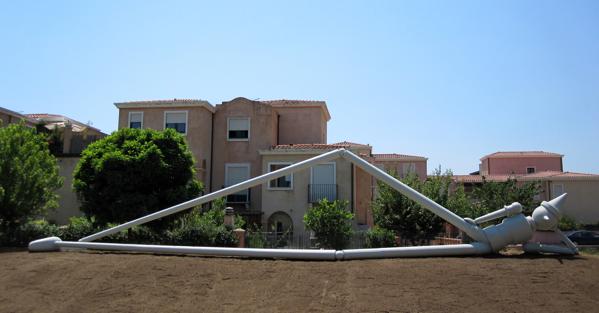Pinocchio in the invisible world by Alex Pinna
[ad_1]
I met Alex Pinna on the occasion of one of his exhibitions in Sardinia, in Tortolì, where I also saw his enormous Pinocchio who is lying on the ground and facing a school building, as if to remind us of all that childhood remains outside the school . On another occasion I passed in front of that very long stretched out puppet and I grasped its attraction even more by seeing children playing with that monument, one in particular had grabbed the long nose and dangled doing the swing. In that exhibition there were new characters, some new little bronze Pinocchios, little men on rope who also leaned in search of a point of balance or imbalance, a posture or a crack that leads to other worlds.
Pinocchio
He’s not the only sculptor to wonder about Pinocchio, even if he doesn’t do it obsessively like Jim Dine who sculpted more than four thousand and made one of them weighing two and a half tons. Other artists have also chosen oversize for the puppet, such as Paul McCarty’s imposing all-black inflatable Pinocchio with a square head presented at the Tate Gallery or the very tall one by New Yorker KAWS who, with his bent shoulders, seems ashamed to retain in his features something of the Disney’s Pinocchio. Alex also had to deal with cartoons and comics and, to distance himself from figures he met in his childhood, he even crushed the unreachable ostrich Beep Beep under an anvil, opened the canary’s cage Tweety, showing it empty and wrapped in a cloud of yellow feathers. The installations allowed him to distance himself from Walt Disney and to rediscover his Pinocchio, which at the beginning still appeared with some traits of Mikey Mouse.
In his studio he makes me retrace the stages of his artistic career, from the first on Human Vices in which the vice of gambling or alcohol is represented by hands that stretch out to excess or by bottles on which a small character lives as on a planet , in the long comparison not only with Pinocchio, but with other characters from the Adventures, such as Lampwick hanging from a light bulb. His human bronzes lean against a wall, are poised on a trampoline, stretch out from a triangular base to leap towards the void, but they don’t want to imitate reality, on the contrary they seem to allude to what lies beyond and which adults are no longer able to see, like the childhood imaginary companion who sulks in a corner because he has been forgotten. The children who climb on the body of the puppet in Tortolì are still able to play with the invisible world that lives next to us and with which Pinocchio is always in contact.


[ad_2]
Source link












